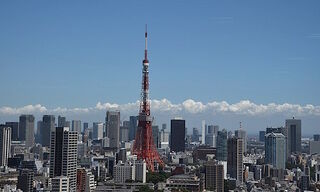A new era of upward price pressure prompted by the pandemic and the Ukraine war left the region largely unscathed.
In a world of alarmist inflationistas, it is hard to remember that just a few years ago the world’s biggest worry was rampant, out-of-control deflation.
But the pandemic and then Russia’s invasion of Ukraine have changed that equation and completely reversed it. Inflationary price pressures are now at the worst they have been since the early 1980s, according to information released by digital publisher Visual Capitalist on Monday, which looked at peak monthly inflation rates in the world' most advanced economies between 2020 and 2023.
Not as High
The interesting, thing, however, is that peak inflation rates in the Asia Pacific region were by far not as elevated as those witnessed in Europe, the US, and Canada.
The highest pace in the publisher’s list of advanced economies was registered by Czechia with 18 percent monthly inflation in September 2022. That was followed by Belgium (13.1 percent) in October and Sweden (12.3 percent) in December.
Major Pacers
The largest economies in the top ten rankings were Germany, which recorded inflation of 11.6 percent in October 2022, followed by the UK (same month, 9.6 percent), the US (June 2022, 9.1 percent), and Canada (same month, 8.1 percent).
Australia is the first country in the Asia Pacific region, placing eleventh by recording an inflation rate of 7.8 percent in December 2022, followed by Singapore (September, 7.5 percent), New Zealand (Q2 2022, 7.3 percent), South Korea (July 2022, 6.3 percent), and Japan (January 2023, 4.4 percent).
Hong Kong, Taiwan, and Switzerland bring up the rear, with inflation rates of 4.3 percent, 3.6 percent, and 3.5 percent (September, June, and August 2022 respectively).
Peak in 2022
An interesting feature of the current cycle is that it appears that inflation peaked in most countries in 2022 and has subsided since then.
Another is that most managed to keep the specter of hyperinflation far from their doorstep. Even though the rate in Czechia looks painful at first glance, it is nowhere near the 50 percent monthly rate when things usually start to get uncontrollable.
That would be obvious to anyone who has lived through countries going through hyperinflation, such as Latin America has experienced several times 1970s. Governments start changing currencies, prices start changing hourly in supermarkets, and salaries quickly become worthless the moment they are paid out. When it happens, you know – and that’s all you think about.


























